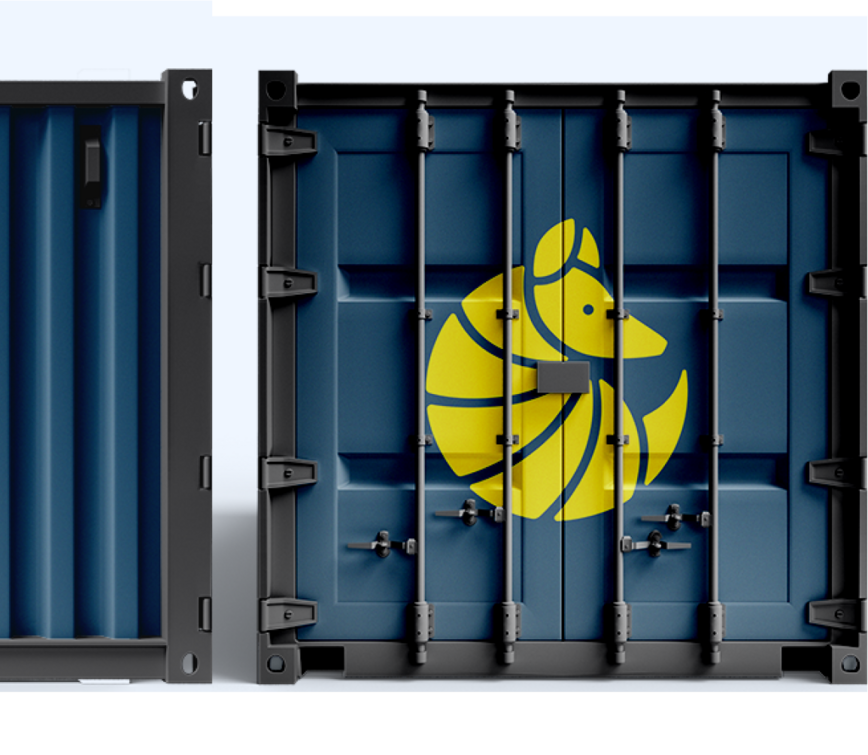Track my order
RESOURCES
Painting Shipping Containers 101: How to Paint a Shipping Container



During the process of manufacturing shipping containers, containers are coated with a layer of durable marine-grade paint, adding a layer of protection for COR-TEN steel. With this protective layer, a container is less likely to accumulate rust when exposed to rain, snow, and sea spray during storage and transportation.
While incredibly durable, the original paint job won’t last forever. Over time and with frequent exposure to the elements, the marine-grade paint on a shipping container can begin to wear down and scrape off. If you’re in the market for used shipping containers for sale, you might find it necessary to give them fresh coats of paint after they’ve been delivered.
Painting can be an important part of caring for your shipping container if you’ve purchased a used container or if you’ve had to for a long period of time. Once you repair a dent, fix a leak, or remove a rust patch, you should apply a fresh coat of paint over it. The paint will restore the weather resistance of the affected area and prevent the same type of damage from happening again.
Repainting a container doesn’t always have to be out of necessity! You might be planning on painting a 40ft shipping container a totally new color to suit a new project – or just because you feel like it.
So, how do you go about putting on a fresh coat of paint on a shipping container? Read this guide to learn the best shipping container painting tips and practices.

How to Paint a Shipping Container
How do you paint a shipping container? Here is a step-by-step process that you should follow.
Check for Lead
First things first. Whenever you’re planning on damaging the paint on a structure, whether it be an old house or a used shipping container, you should test the coating for lead beforehand. You’ll want to be sure that you don’t accidentally release particles from lead paint into the air.
If there’s no lead present, you can continue with your painting plans as normal. The EPA strongly recommends that lead tests be done by either a certified lead inspector or a certified lead risk assessor.
Wash the Container
Once you’ve established that it’s safe to modify your container, you can prep it for painting. Start by using a pressure washer to remove any dirt and grime from the exterior.
Sandblast the Container
To take your container cleaning to the next level, your next step could be to sandblast your container.
Sandblasting can eliminate rust patches, remove old paint and create a smooth “blank slate” to work on.
Sandblasting isn’t necessary for most circumstances. You might only want to consider this option if you purchased a used container that has a lot of rust patches and missing paint. If there is only a small amount of rust on the container, you can simply remove them with a wire brush.
Sandblasting is time-consuming and expensive so if you can save yourself time and money by skipping this process, you might want to do so. However, if you do decide to sandblast your container, you should thoroughly clean it and dry it before applying any primer or paint.
Remove the Stickers
Your shipping container might have various stickers and data plates on the exterior walls. These are essential for shipping cargo. If you don’t plan on using your container for shipping purposes, you should remove these before you paint to ensure the application is smooth and even.
The adhesive for these stickers can be quite strong. You might need to carefully apply heat with a blowtorch to soften the adhesive. Once the adhesive has been softened, you can scrape the stickers off.
Prime the Container
Applying a base coat of primer will help the paint adhere better to the container walls, and better paint adherence means fewer coats of paint. Using a primer also means that your paint application is likely to be even and long-lasting.
When shopping, find a rust-resistant primer that’s designed for outdoor structures. This will be ideal for your shipping container, whether it’s being used as a storage unit or living space. Take note, some paints will have primer added to their formulas which means you may not need to get separate cans of primer and paint.
To get started, apply a single layer of primer onto the container. Then, wait for it to dry completely before you add a coat of paint. Note that this could require you to wait for an entire day.

Paint the Container
Once your primer has fully dried it’s time to get started on the actual paint. Overall, you will need to apply 2-3 coats of paint to the shipping container. If the original paint is dark, and you’re covering it with a lighter shade, you should expect to apply more than 2 coats.
What’s the Best Way to Paint a Shipping Container?
The best way to paint a shipping container is to use a pneumatic paint sprayer. Using a paint sprayer is quick and efficient and you can apply a single coat in approximately half an hour. While you can use brushes and rollers to apply the paint, it will take you much longer to finish a single coat.
When Should You Paint a Shipping Container?
The best time to paint a shipping container is on a dry, sunny day. You don’t want the environment to be damp – any moisture could extend the drying process, or worse, ruin the final results.
One of the worst ideas you can have is painting a shipping container on a damp, cool, rainy day. Water can get trapped under a coat of paint, which can make it dry with bubbles or ripples under the surface. It will be ineffective and look terrible.
In order to avoid this from happening, your best bet is to consult the weather app to ensure that the weather will corporate with your plans to paint your shipping container.
How Much Paint Will You Need?
The amount of paint required depends on the size of your shipping container. If you’ve purchased a 20ft shipping container, you should expect to use 3-4 gallons of paint. Alternatively, if you’ve purchased a 40ft container, you will need twice as much paint to finish the job.
What Type of Paint Should You Use?
The best paint for shipping containers is marine-grade waterborne DTM (direct-to-metal) paint. This type of paint is durable, water-resistant, and corrosion-resistant. It also contains low levels of VOCs in comparison to other types of paint, which makes it safer to use. This is the best paint for shipping containers being used as homes.
Another good option for shipping containers is acrylic paint. It comes in bold color options, is durable, and is very effective when it comes to painting shipping container exteriors. However, when it comes to shipping container interiors it’s not the greatest idea to use acrylic options. Why? The chemical contents of the paint let off more VOCs, which can be unsafe to breathe in.
What Paint Colors Should You Choose for Shipping Containers?
For the most part, choosing the color of your shipping container is totally up to you! However there are a few factors to take into consideration when choosing your color. First, your local climate. If your container is in a hot, sunny climate, you may want to choose lighter paint colors for your shipping container. Darker colors can absorb the sunlight, which can make the interior of the container very hot. This could become a major problem if you’re using the container as a living space. You don’t want to accidentally turn your container home into a sauna. Try choosing lighter paint colors to reflect the sunlight off your shipping container and keep the interior comfortable and cool.
What if the container is in a cooler climate? In that case, you might want to consider a darker shade that will absorb all that sunlight and make the interior a little warmer.
Painting your shipping container is a big project to undertake. By following this simple painting guide, you can make sure that your project goes smoothly from beginning to end. If you’re interested in purchasing a new or used container, browse our wide selection of containers, here.

About Nina Barango
Nina Barango is an experienced content marketer and container expert with a proven track record in the tech and logistics industry. Having worked with various startups and SMEs, she bridges the world of marketing, tech and shipping containers. When she's not creating content that'll revolutionize global container trade, you can find Nina reading a book or mastering her video editing skills.







Continue Shopping
Loading cart